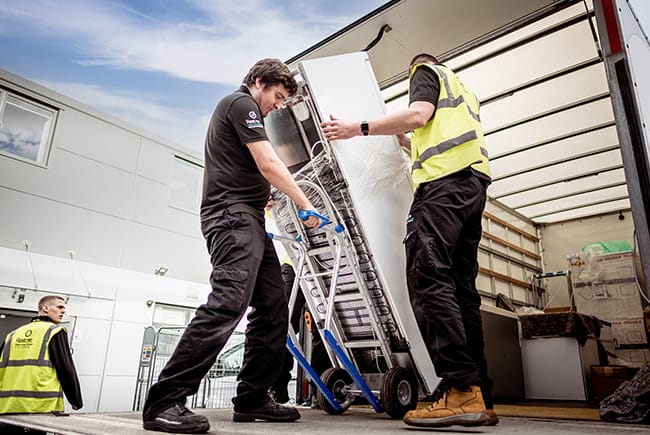
When a building is being refurbished, extended, or repurposed, day‑to‑day activity can’t simply stop. That’s where decanting comes in. In plain terms, decanting means temporarily moving people, equipment, and operations out of an area so that construction work can proceed safely and efficiently. It might be useful to think of it as a well‑planned “lift‑and‑shift” that keeps business moving while the site changes around it.
Below is why a structured decant matters and how specialist business relocation partners like Restore Harrow Green can help you plan and deliver it with minimal fuss.
Safety and compliance: Keeping everyone safe
Construction sites are hazardous by nature. Dust, noise, temporary power, restricted access, and contractor movements all raise risk levels, and employers must protect staff, visitors, and contractors. A clear decanting construction plan ensures people are removed from active works, routes are segregated, and critical services are maintained without cutting corners.
Practical examples include scheduling phased floor‑by‑floor moves, setting up temporary safe work areas, and protecting sensitive zones (e.g., labs, clinical rooms, or comms spaces) with appropriate containment. A compliant decant plan records who moves where and when, how waste and redundant assets are handled, and how emergency access and fire strategies are maintained. Restore Harrow Green can support with risk assessments, method statements, and on-the-ground move management that keeps everyone safe as the project progresses.
Minimising disruption and maintaining business continuity
The biggest concern when decanting building occupants is downtime. Thorough planning is required to determine which teams can work remotely, which must remain on‑site, and what must be available on day one in the temporary location. That might include Wi‑Fi and printing, quiet meeting spaces, secure storage, or hygiene facilities.
We often see success with phased moves that align with the contractor’s programme: decant one zone, complete works, back‑fill, and repeat. Our move managers coordinate with your general contractor and IT teams so that your essential services (e.g. network, telephony, and collaboration tools) are ready the moment your people arrive. When done well, colleagues experience a seamless “Friday out, Monday in” transition with little more than a desk change and a new office map.
Protecting equipment and assets
From desktop kits and specialist tools to servers, AV, and scientific equipment, assets need to be packed, handled and tracked with the utmost care to maintain a robust chain of custody. Barcoded inventories and tamper‑evident crates help you know exactly where everything is. Sensitive equipment may need climate‑controlled transport, anti‑static protection, or out‑of‑hours handling. Confidential files require sealed containers and secure transfer.
Our teams are trained to move high‑value and business‑critical equipment, with the right materials and vehicles for the job. If you’re consolidating or refreshing assets during the decant, we can decommission and recommission IT, arrange secure storage, and manage compliant recycling or resale of redundant items. This helps to reduce clutter for when you move back in.
Faster project completion and cost efficiency
A well-planned decanting strategy is key to reducing bottlenecks for expedited construction. Clear, empty zones let trades work efficiently, reduce the likelihood of rework, and keep the programme on track. This then helps control the contractor’s site overheads and avoids the hidden costs of overruns: extended leases on temporary spaces, extra site supervision, and prolonged business interruption.
Decant planning also reduces waste. By planning exactly what moves and when, you avoid moving the same items twice, reduce unplanned deliveries, and limit last‑minute hires. With a proper inventory, you can schedule transport, crates, and labour precisely and avoid premium call‑outs. Many organisations use the decant window to reconfigure teams, retire unused kit, and standardise equipment – gains that continue long after project completion.
How professional relocation services help with decanting
Pre-moves and planning
We survey your site, map dependencies, and build a decant sequence aligned to the contractor’s programme. You’ll get a clear business relocation plan with box counts and labelled floor plans so that everyone is sure of their role.
Find Out More
On‑site move management
Our supervisors and porters execute carefully staged moves – handling packing, protection, lifting, and placement. Barcoded tracking is a key part of move management, keeping the inventory visible from start to finish.
Find Out More
IT relocations and technical moves
From patching schedules and relocating servers and data centres, we coordinate with internal teams and vendors so the technology “just works” at the temporary location.
Find out more
Storage and asset solutions
Short‑term storage helps with phasing; longer‑term storage supports refurbishments and phased fit‑outs. We also manage certified recycling and remarketing for items you don't need.
Find out more
Communication and change support
We help you brief staff, set expectations, and provide on‑the‑day helpdesks so colleagues have a positive experience – reducing stress and keeping productivity high.
Find out more

Need help with relocating?
If you’re about to start a refurbishment and wondering whether to decant, the answer is almost always yes – provided it’s planned properly. A structured decant protects people, preserves assets, and keeps the programme moving. Restore Harrow Green can design and deliver a decant plan that fits your build schedule and your budget, from first survey through to hand‑back and move‑in.
Ready to talk? Get in touch, and we’ll help you create a safe, efficient decant that keeps your business running while the construction team gets to do what they do best.
Get in Touch Customer Login
Customer Login